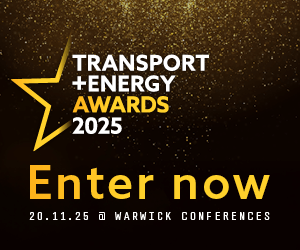Dr Giulia Privitera, Social Sustainability Strategy and Programme Manager at UK Power Networks, discusses breaking down barriers to make EV chargepoints accessible for all.
Over 1.35 million drivers with disabilities will be reliant on public charging infrastructure to charge their electric vehicles (EVs) by the mid-2030s. It sounds like a long time away, but in less than 15 years we’ll need to face up to the challenge to ensure nobody is left behind in the transition to Net Zero.
Until recently, on-street chargepoints have not always been designed with accessibility in mind, making it harder for disabled drivers who use on-street parking to make the switch to EVs.
With the Government’s ban on the sale of petrol and diesel cars by 2030 just around the corner, over one million people with disabilities are not only at risk of being left behind in the transition to Net Zero, but also of having their independence taken away. Action must be taken now to address the accessibility concerns surrounding public chargepoints and to facilitate a low carbon future for all.
We know the needs of drivers with disabilities will differ from other EV drivers. The first step is understanding what the barriers are that need to be overcome; from parking bays that are too small and a lack of dropped kerbs making it difficult to get close to charging equipment, to the chargers themselves being too high to reach, connected to heavy cables and screens that can be hard to see. For many of us, it’s hard to imagine facing so many challenges just to carry out what should be an easy, everyday task.
Our research found that more than half of the disabled drivers in the UK are considering switching to an EV in the next five years, and more than two thirds of them are worried about their ability to access public chargepoints.
As an electricity network operator we don’t generate or supply electricity, we manage the local power lines and substations. It’s our job to make sure the network is ready for low carbon technology like EVs to connect and we’re committed to being an enabler of Net Zero for all our customers. Therefore, it’s vital we listen to customers and bring them along with us. That’s why we’ve been working with Motability to identify the specific needs of potential disabled EV drivers who park on-street and need to park close to their home or destination.
Our aim is to make sure disabled drivers have the infrastructure they need to charge their cars, so they can continue to get out and about in a low carbon world. Our research includes a survey of 1,000 disabled drivers, as well as interviews with 20 local authorities, five chargepoint operators, OZEV and Transport for London. We took what we learned and combined it with our forecasts for electric vehicle uptake to map out where we anticipate charging infrastructure is needed to support drivers with disabilities, and how we can help deliver it at the lowest cost.
We are continuing to work in partnership with local authorities to inform their Local Area Energy Plans, helping make a real difference to the accessibility of any new infrastructure put in place.
This pioneering research as part of the Enable project, directly informed by people with disabilities, is the first step towards accelerating the uptake in EVs and ensuring no disabled driver is left behind in the transition to a low carbon world.
To find out more about our research and how we’re going to turn it into action join us at our Enable webinar on 7th December 2021 at 2pm.
Find out more here: https://bit.ly/3qOuFEp
Image courtesy of UK Power Networks.















